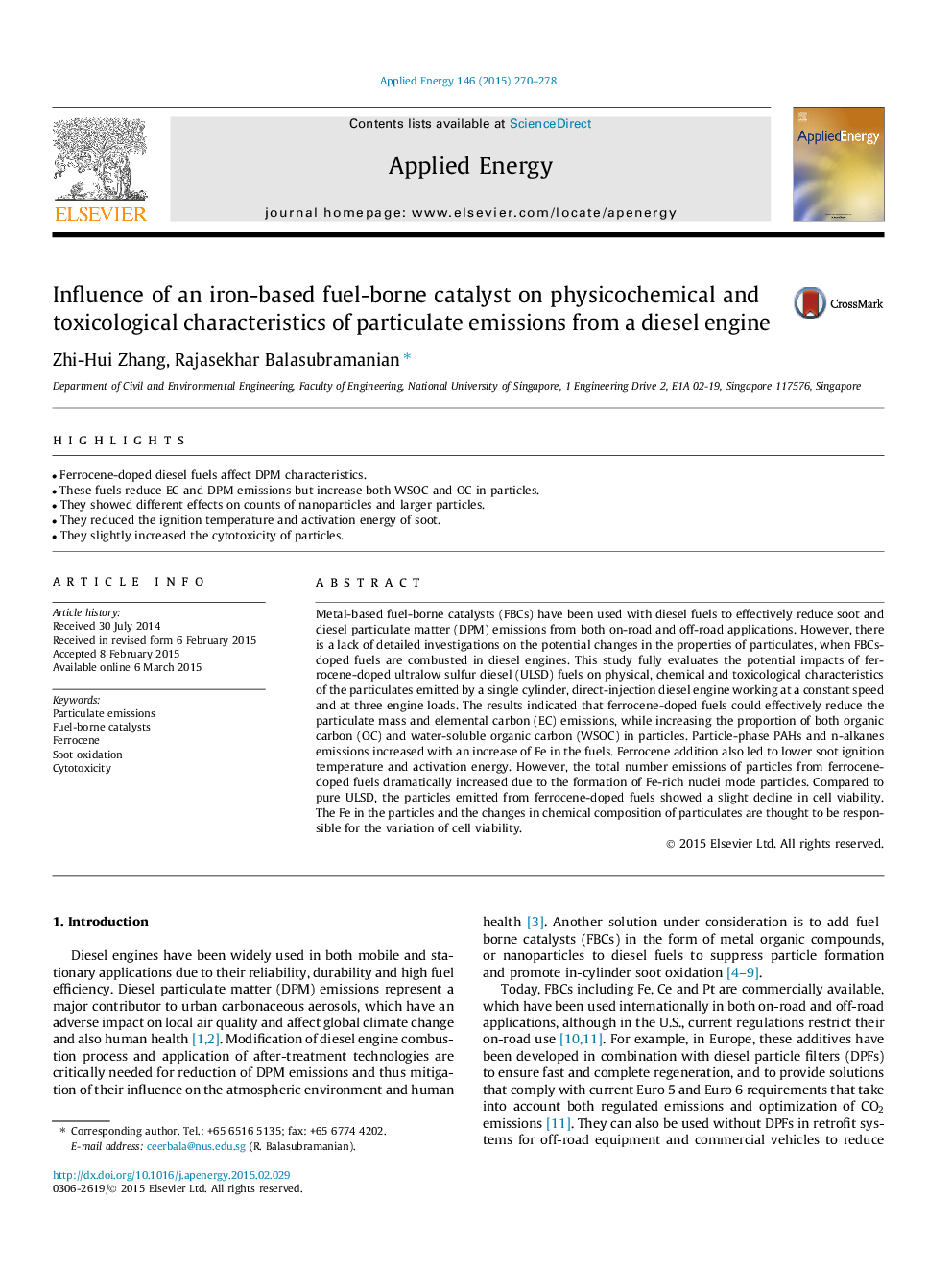| Article ID | Journal | Published Year | Pages | File Type |
|---|---|---|---|---|
| 6687599 | Applied Energy | 2015 | 9 Pages |
Abstract
Metal-based fuel-borne catalysts (FBCs) have been used with diesel fuels to effectively reduce soot and diesel particulate matter (DPM) emissions from both on-road and off-road applications. However, there is a lack of detailed investigations on the potential changes in the properties of particulates, when FBCs-doped fuels are combusted in diesel engines. This study fully evaluates the potential impacts of ferrocene-doped ultralow sulfur diesel (ULSD) fuels on physical, chemical and toxicological characteristics of the particulates emitted by a single cylinder, direct-injection diesel engine working at a constant speed and at three engine loads. The results indicated that ferrocene-doped fuels could effectively reduce the particulate mass and elemental carbon (EC) emissions, while increasing the proportion of both organic carbon (OC) and water-soluble organic carbon (WSOC) in particles. Particle-phase PAHs and n-alkanes emissions increased with an increase of Fe in the fuels. Ferrocene addition also led to lower soot ignition temperature and activation energy. However, the total number emissions of particles from ferrocene-doped fuels dramatically increased due to the formation of Fe-rich nuclei mode particles. Compared to pure ULSD, the particles emitted from ferrocene-doped fuels showed a slight decline in cell viability. The Fe in the particles and the changes in chemical composition of particulates are thought to be responsible for the variation of cell viability.
Related Topics
Physical Sciences and Engineering
Energy
Energy Engineering and Power Technology
Authors
Zhi-Hui Zhang, Rajasekhar Balasubramanian,
